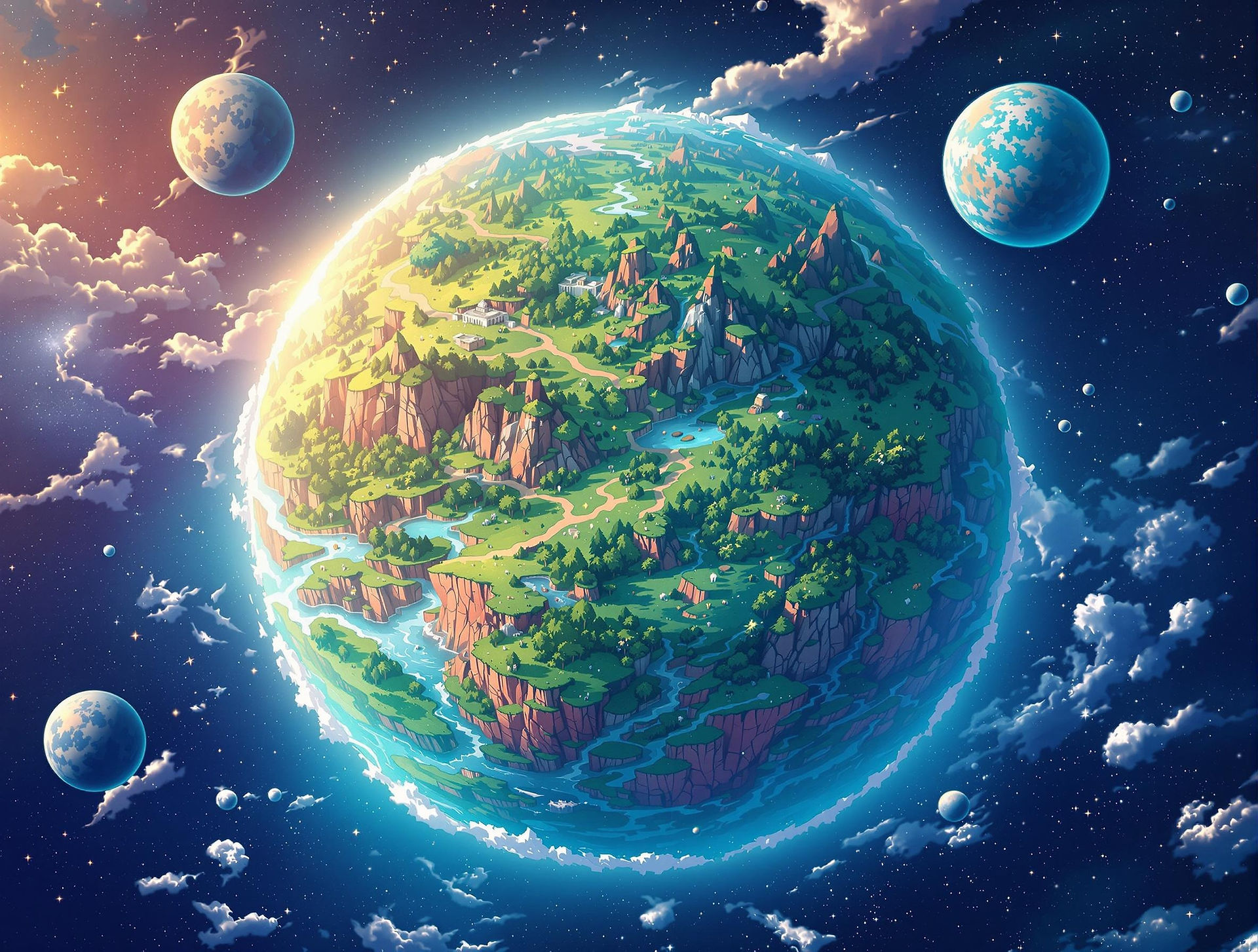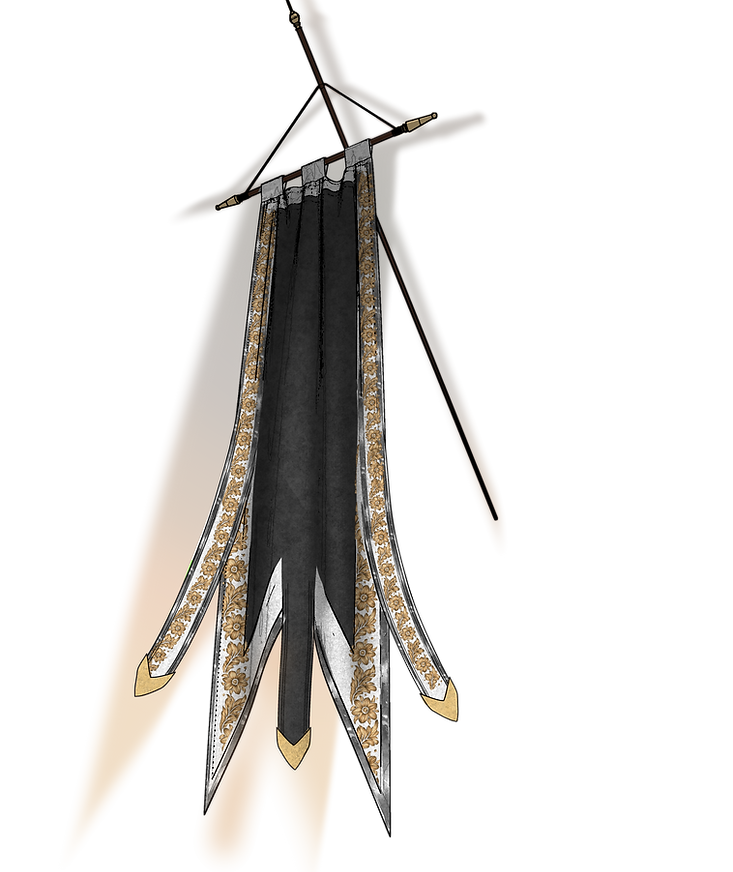
Continents & Regions

Apapon
“Enduring as Stone, Serene as Snow—In Apapon, We Find Strength in Stillness.”
In the far northern reaches of the world lies Apapon—a land sculpted by relentless winds and the patient hand of ice. Here, jagged mountain peaks pierce the pale sky, and endless tundra stretches beneath a mantle of snow, undisturbed except for the hardy yaks and the people who tend them. Life in Apapon is a meditation in resilience: every stone, every gust, every silent snowfall is a testament to endurance. The people are as steadfast as the land—deeply spiritual, grounded in tradition, and fiercely protective of their home. Their society is guided not by a single ruler, but by the wisdom of two ancient monk families, whose balance of power and devotion to harmony shape every aspect of life. At the heart of Apapon stands Windfrost, a city carved from stone and frost, where the wind sings through gray streets and the mountains stand sentinel. Despite the harsh cold, there is a warmth in Apapon’s spirit—a quiet strength, an unbreakable bond with the land, and a reverence for the beauty found in endurance.
Windfrost
Capital:
Economy:
Main exports: Yak fur, yak meat, ice, precious stones
Subsistence farming and foraging
Limited trade due to harsh climate and terrain
Geographic Features:Expansive, snow-covered mountain ranges
Tundra plains
Windswept gray coastlines
Glacial valleys and ice fields
Cultural Significance:Center of spiritual reflection and monastic tradition
Known for resilience, meditation, and harmony with nature
Celebrations tied to solstices, mountain festivals, and yak harvests
Population Est. ~
210000
(Low density due to harsh climate and terrain)
Major Cities:
4
(Notable for their unique roles—trade, mining, spiritual centers)
Major Town Population Numbers:
Frostgate: 12,000 (trade hub)
Stoneveil: 9,000 (mining and crafts)
Highspire: 7,500 (spiritual center)
Riverhold: 6,000 (farming/foraging)
Frostgate:Main trade entry, with a bustling market for yak goods and imported supplies
Located at the mouth of a mountain pass
Stoneveil:Center for mining, stonework, and artisanal crafts
Famous for jewelers and stone carvers
Highspire:Perched on a high plateau, home to the largest monastery
Pilgrimage site for spiritual seekers
Riverhold:Nestled by the only major river, supporting limited agriculture and foraging
Known for herbalists and healers
Climate Description: Subarctic to polar
Long, harsh winters with heavy snowfall
Short, cool summers
Frequent winds, especially near coasts and mountain passes
Governance: Dual-monastic theocracy
Ruled by two joint monk families (Monset and Saron)
Council of elders advises on civic matters; spiritual leadership is paramount
Village/Settlement Details:Scattered hamlets (population 200–1,500 each)
Built from stone and insulated with yak hides
Each settlement has a small shrine, communal hall, and a yak herd at its core
Villagers practice communal living, sharing resources and duties
“In Apapon, silence is sacred, snow is a teacher, and every stone remembers the footsteps of those who came before. Here, strength is quiet, and the heart of the mountain beats within its people.”

Curcassa
“Where Romance Blossoms, and Beauty is Eternal—Curcassa Awaits.”
Curcassa is a land where romance is written into the very earth—a country famed for its sun-drenched orchards, rolling emerald hills, and mountains that rise like watchful sentinels above the land. Its legendary white beaches are soft as silk, drawing lovers, poets, and dreamers from across the world. The air here is perfumed with the scent of ripening fruit and blossoming vines, while the laughter of visitors mingles with the gentle sigh of the sea. Curcassa’s vineyards produce wines of unparalleled quality, sipped in marble courtyards shaded by olive trees. Beneath the surface, veins of dazzling diamonds and precious gems fuel the nation’s wealth and mystique. Yet, for all its luxury, Curcassa is a land of proud tradition—its people fiercely devoted to the preservation of their culture, their natural splendor, and the regal heritage embodied by King Arthus Albalan III. Every sunset here is a celebration, every festival a tapestry of music and color, and every heart beats with a quiet, enduring pride.
Corcusmirre
Capital:
Economy:Major exports: Fine wines, diamonds, precious gems, luxury goods, exotic fruits
Robust tourism industry (romantic getaways, beach resorts, vineyard tours)
Artisan crafts, jewelry, and culinary delicacies
Geographic Features:Vast, sun-kissed orchards and vineyards
Rolling green hills and valleys
Towering, picturesque mountain ranges
Legendary white sandy beaches and serene coastlines
Sparkling rivers and lush groves
Cultural Significance:Renowned for romance, luxury, and elegance
Deeply rooted traditions, festivals celebrating love, harvest, and heritage
Artistic and musical legacy—home to poets, artists, and musicians
Conservative, prideful populace with a strong sense of identity
Population Est. ~
2400000
Major Cities:
5
Each with its own unique character—coastal, mountainous, or wine country
Major Town Population Numbers:Isola San-Grecomo: 110,000 (wine & gem trade)
Isola San-Montrel: 98,000 (mountain views, artisan markets)
Isola San-Grecomo: 54,000 (orchard views, agricultural area)
Valcoran: 85,000 (beach resort town)
Montelucia: 72,000 (orchards, culinary hub)\
Fiorenza: 60,000 (historic center, festivals)
Major Town Details:
Isola San-Grecomo:Renowned for world-class wineries and gem markets
Overlooks rolling vineyards and a sparkling bay
Annual Wine Blossom Festival draws thousands
Isola San-Montrel:Nestled in the mountains, famed for artisan crafts and music
Dramatic vistas and mountain trails
Hosts the Lovers’ Moon Festival each spring
Valcoran:The country’s premier beach resort town
White sands, turquoise waters, luxury spas
Known for the Summer Solstice Celebration
Montelucia:Heart of the orchard country, culinary capital
Weekly farmers’ markets and food festivals
Home to renowned chefs and patisseries
Fiorenza:Historic town with ancient ruins and preserved architecture
Famous for the Festival of Lanterns and art exhibitions
Climate Description:Warm, temperate Mediterranean climate
Long, sunny summers and mild winters
Gentle sea breezes, lush growing seasons
Governance:Hereditary monarchy, ruled by King Arthus Albalan III
Nobility and local councils oversee towns and regions
Strong emphasis on tradition, lineage, and ceremony
Village/Settlement Details:Hundreds of small villages (pop. 500–4,000 each)
Stone cottages, vibrant gardens, and communal vineyards
Each village has a central square, chapel, and annual fair
Villagers are known for hospitality, traditional dress, and music
“In Curcassa, every sunrise is a promise, every sunset a memory. Here, love is harvested with the grapes, and beauty is as enduring as the mountains.”

